What makes the experience of watching Tafakory’s avant-garde films so paralysing?
Maryam Tafakory is part of a new generation of Iranian filmmakers who engage the politics of memory through essay-films and experimental cinema. The London-based Iranian artist’s work consists, almost entirely, of archival footage and the meticulous rearrangement of cinematic fragments selected from hundreds of Iranian films made after the 1979 Islamic Revolution. Sourced primarily from her personal archive and YouTube, the dissected and reassembled scenes from the movies are later overlaid with anachronistic sounds from the original audio, or deftly scored by contemporary composers (such as Canadian Sarah Davachi in Tafakory’s 2023 film, مست دل Mast-del).
Tafakory employs a queer feminist gaze to emphasise the Iranian government’s codes of modesty and censorship while simultaneously critiquing the limitations of Western feminist film theory – most notably notions of voyeurism that have been prominent since Laura Mulvey’s 1975 essay Visual Pleasure and Narrative Cinema. One of the scenes that best captures this juxtaposition, which Tafakory makes use of in نظربازی Nazarbazi (2022) and مست دل Mast-del, is of the blindfolded soldier in Kamal Tabrizi’s شیدا Sheida. In the 1999 film, an Iran–Iraq War veteran who has temporarily lost his eyesight falls in love with the voice of his nurse Sheida, who awkwardly recites the Quran to him to alleviate his pain and PTSD nightmares: a sinless love affair between a man and a woman in the absence of vision.
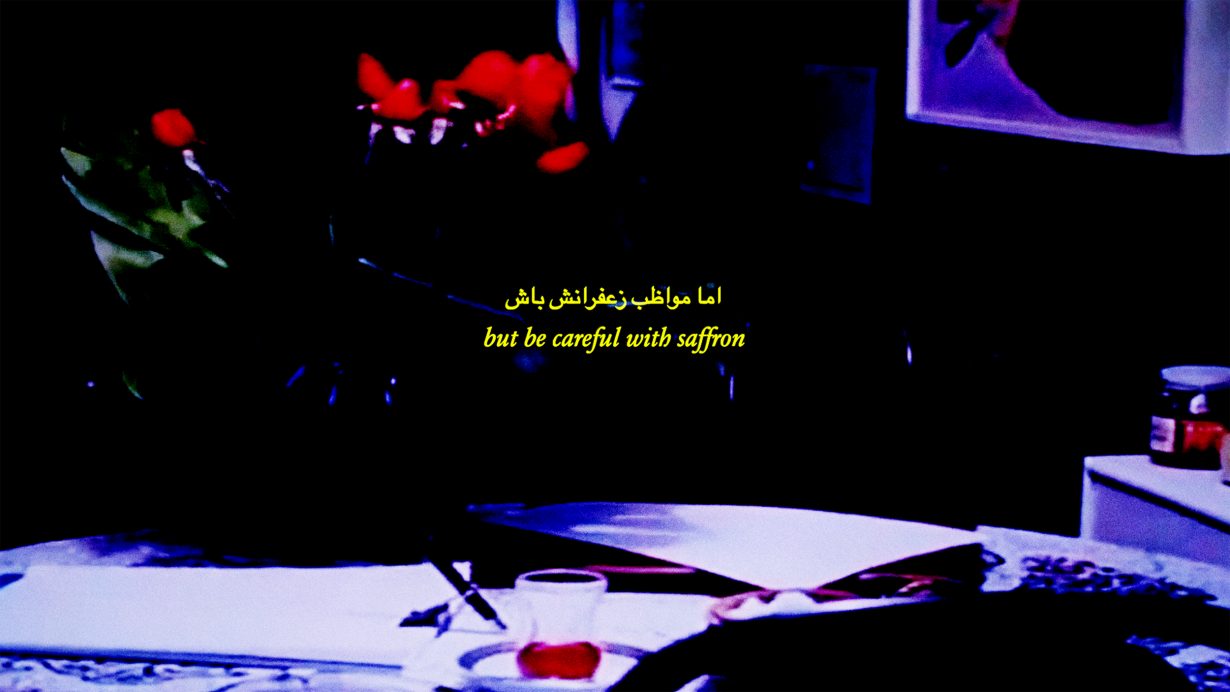

The contradictions of public and private life as depicted in postrevolution Iranian cinema has been the subject of countless articles and essays, and is explored extensively in Negar Mottahedeh’s book Displaced Allegories: Post-Revolutionary Iranian Cinema (2008). Tafakory is a filmmaker who speaks from within that memory space of lived experience. Most presciently, however, there is a pointed voicelessness to her films, with text that overlays or sits alongside the footage as the primary vessel for speech. In her earlier works, such as کیف ایرانی Irani Bag (2020) or نظربازی Nazarbazi, the text that plays on the screen is composed from commentary by the artist, as well as essays, prose and poetry by other writers. She writes in English and Persian, using fragments gleaned from texts by French poststructuralist authors such as Roland Barthes and Jacques Derrida, or from modern Iranian poetry by Nima Yushij and Forough Farrokhzad. The poetics of Tafakory’s work stem from her surgical destruction of containerised conceptions of knowledge. In their place, she weaves together references that form a kaleidoscopic interiority of postwar Iranian youth who came of age during a period of extreme state censorship and control of civilian life. The work is written and edited from the psychic and semantic strata of these juxtapositions, and herein lies the disorienting duality of experiencing Tafakory’s work in the West; not everyone is fully invited ‘in’.
The titles of all her films are composed of the original Persian with English translation or transliteration. کیف ایرانی Irani Bag, Tafakory’s most didactic film, is a rumination on the role of bags as props in Iranian postrevolutionary cinema and a prosthetic for touch under the eyes of the voyeuristic government that watches and controls. کیف ایرانی Irani Bag references a popular Iranian TV series, The English Bag (Keef-e Ingelisi, 1999–2000) that depicts the British diplomatic mission and imperial interference in Iranian politics leading up to the 1952 coup d’état. In نظربازی Nazarbazi she excavates the erotics of the omnipresent work of the fifteenth-century Iranian poet Hafiz, who had been renarrativised as a pious devotee of God in postrevolutionary Iranian state-media. In نظربازی Nazarbazi – which can be translated to ‘eye fucking’ and ‘lustful glances’ – it is the eyes in the absence of words that become the protagonist in a history of forbidden lust and disembodied love.
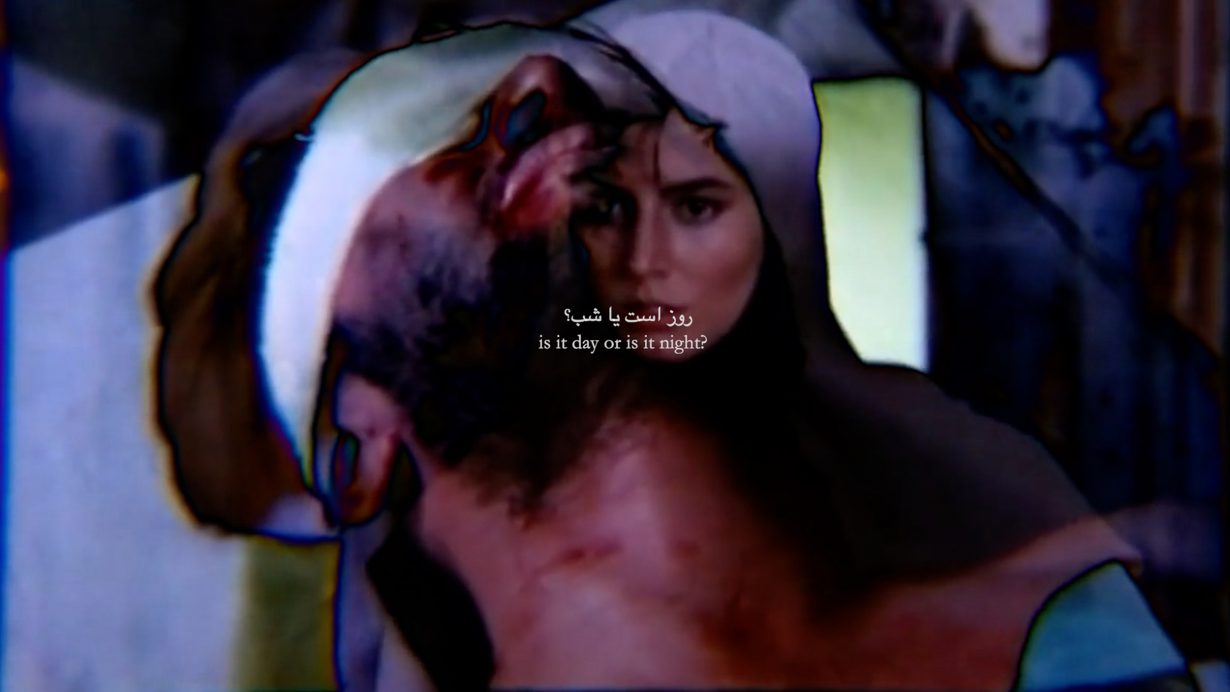
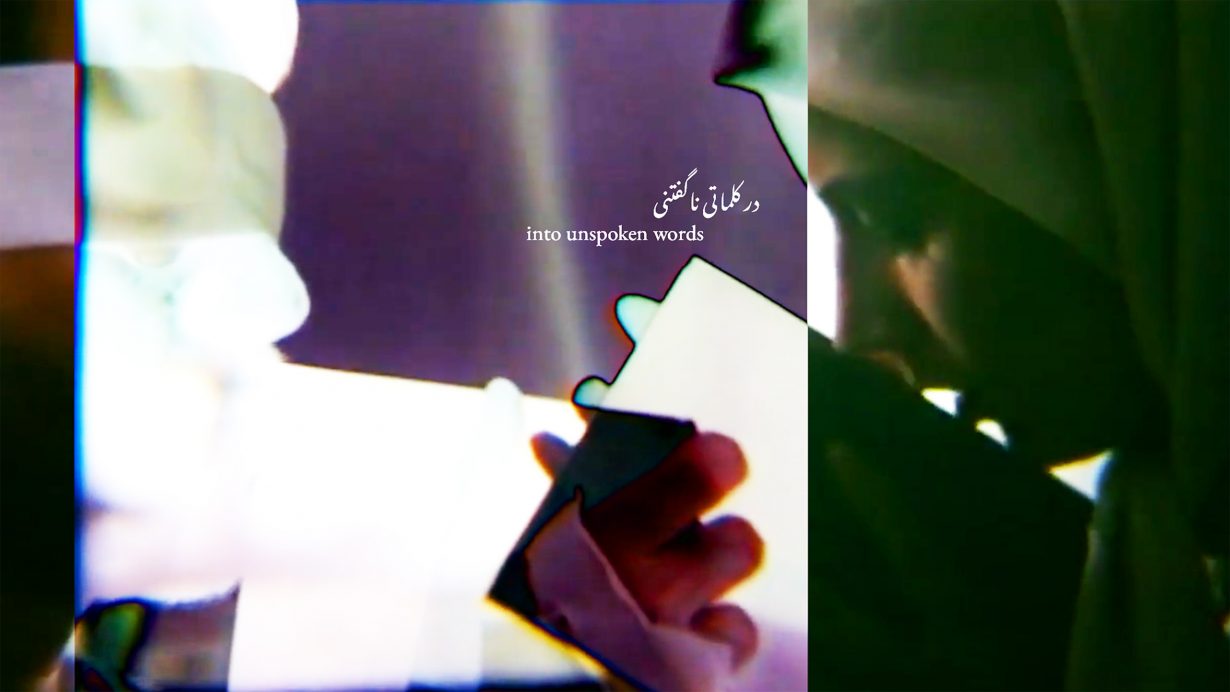

Tafakory’s work consistently evokes a sense of out-of-placeness, often driven by the construction of anxious sonic textures from the looped crackling of archival sound. Through its complex compositions deploying mirroring, inversion, superimposition and expressive colour manipulations, the دل Del series is particularly haunting. In the eerie darkness of the movie theatre, the larger-than-life figures who have lit up thousands of Iranian screens over decades apparate anew, and stare at the audience in silence. The only audible voices are muffled, attempted enunciations between sleep and wakefulness. This ongoing series of films, of which مست دل Mast-del and راز دل Razeh-del have been respectively released in 2023 and 2024, takes matters to دل Del (‘heart’ in English). Her new films employ a more personal approach by narrating (through English and Persian text) specific memories, and recounting intimate stories of violence, desire and loss from the same era as the one to which the archival footage belongs. At no point during the film or in the end credits is it revealed whether these are the filmmaker’s own memories or not. Through this conscious choice the filmmaker invites the familiar audience to recall their own parallel stories of the time and place with her.
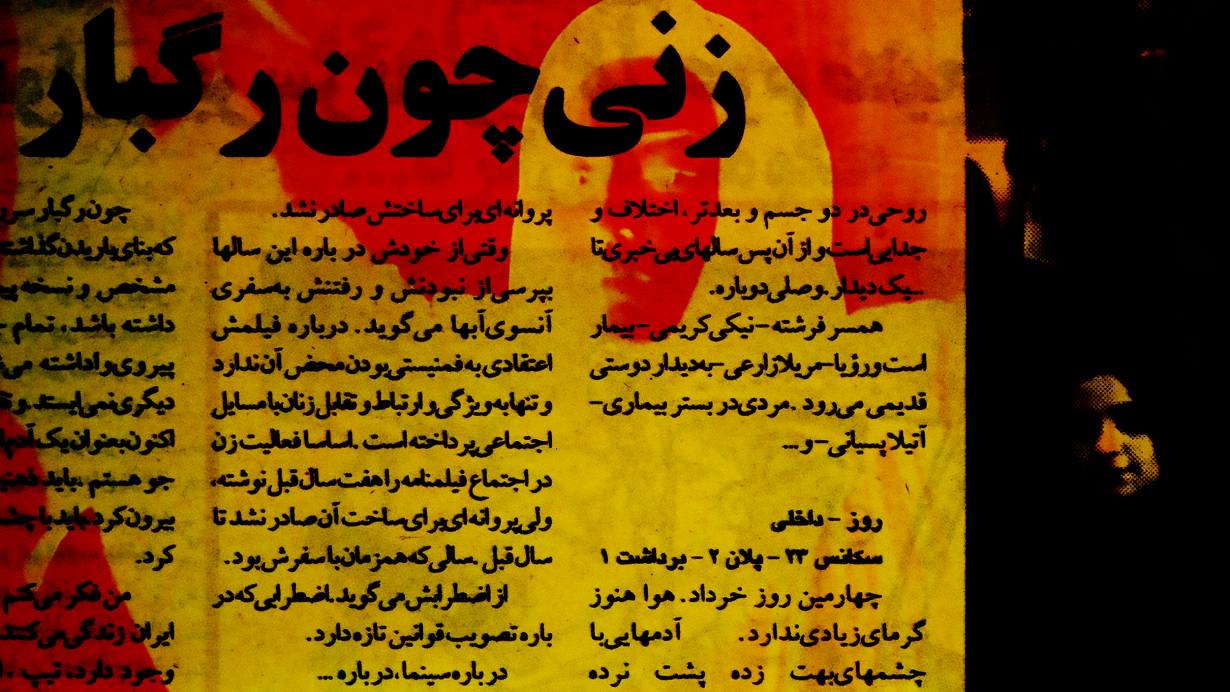
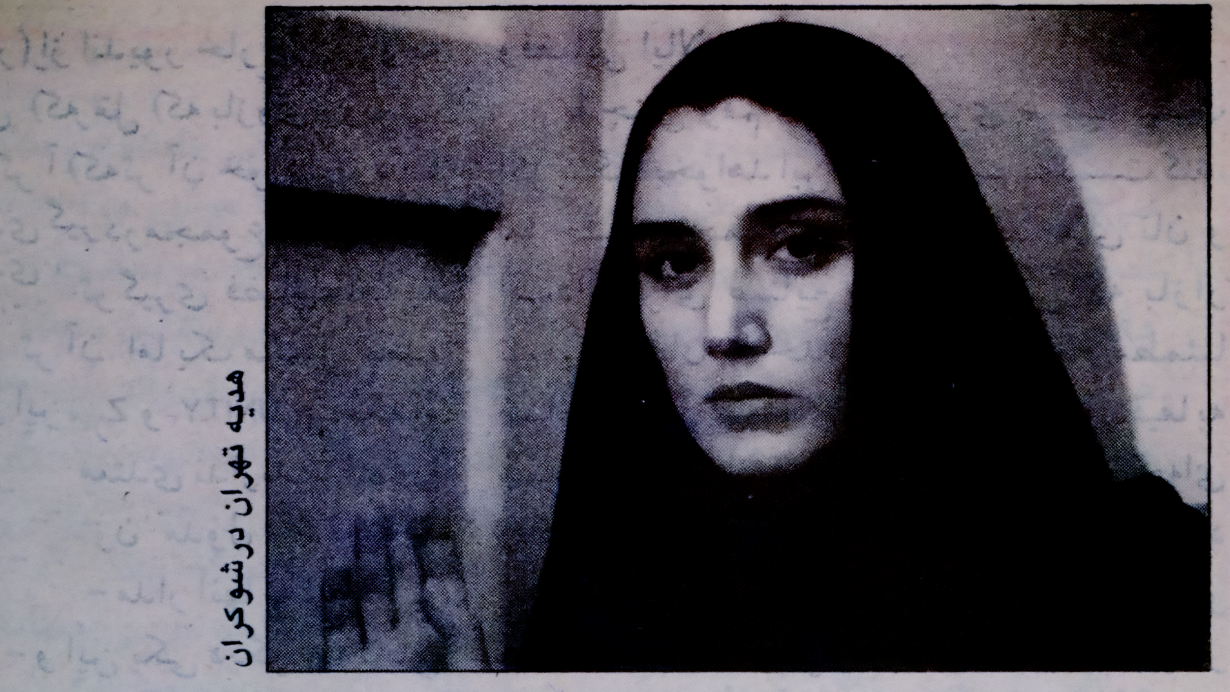

From a queer feminist perspective, Iranian cinema is a minefield. Its avant-garde and contemporary champions, whether Masud Kimiai (with Gheisar, 1969) or Ali Abbasi (Holy Spider, 2022), are as deeply rooted in violence against women and queers as blockbusters such as Fereydoun Jeyrani’s Red (1999). The political guardianship of the country may have changed drastically since the revolution, but the misogyny of Iranian cinema has remained largely unchanged by new codes of censorship and innovative approaches to form. Conversely (and somewhat unsurprisingly) Western pundits and mainstream film festivals have commended the almost entirely male cohort of contemporary Iranian filmmakers for their ingenious bypassing of state censorship.
Like Tafakory, my upbringing in Iran was largely influenced by religion and cinema; a male-dominated cinema persistently marred by the figure of the ‘deranged’ and ‘hysterical’ woman who is routinely punished with excessive violence. From the young woman who self-immolates to avoid an arranged marriage (Dariush Mehrjui’s بمانی Bemani, 2002), to the sacrificial wife who, upon learning of her infertility, goes searching for a new wife for her husband (Mehrjui’s لیلا Leila, 1997), to the disfigured, wretched prostitute who survives an acid attack by her ex-husband (Fereydoun Jeyrani’s ب و آتش Water and Fire , 2001). Drawing from this cinematic archive of violence against women, the end credits of Tafakory’s films read like a damning who’s who of Iranian misogynistic filmmakers. The women in these films occupy supporting roles for the main antihero of the film, what I’d call the melancholic male, epitomised by the character Hamid Hamoon in the 1989 awardwinning classic Hamoon, directed by the late Mehrjui. However, under Tafakory’s close examination, they reemerge as a hybridised central subject.


Tafakory’s films remind me that Iranian movie theatres are where my generation learned to erase the hijab from the head of the women in our heads, so as not to let it determine the character’s traits. It was just a code. We also learned to accept the brutal death of the prostitute, and the beating of the ‘whining’ woman by her husband. We learned to accept this violence and carry it with us as we walked out of the cinema into the light of day, adopting the codes we were taught in the school of cinema.
The figure of bakhtak in Persian civilisations, among other West Asian and North African cultures, is a demon who paralyses you by sitting on your chest while you sleep. For those of us who grew up during the same era and with access to a similar cultural milieu as Tafakory, experiencing the cinema that she has created through the ghosts of postrevolutionary Iranian films is a paralytic experience. In the introduction to the 2008 edition of her book, Ghostly Matters, sociologist and theorist Avery Gordon asks: ‘What kind of case is a case of ghosts?… It is a case of the difference it makes to start with the marginal, with what we normally exclude or banish, or more commonly, with what we never notice.’ Reconciling with ghosts is only made possible collectively, however individualised the experience of a personal haunting might be. By conjuring the ghosts of this cinematic archive, Tafakory’s oeuvre brings an urgent queer feminist perspective into the heart of Iranian cinema. Her work disembowels the codes and the affect created over decades of cinematic depictions of gendered violence and creates an arresting environment for reconsidering our relationship not only to Iranian cinema, but cinema itself.
Maryam Tafakory is a nominee for the Film London Jarman Award 2024, an exhibition of which is touring the UK through 3 December
Gelare Khoshgozaran is an Iranian artist based in Los Angeles
